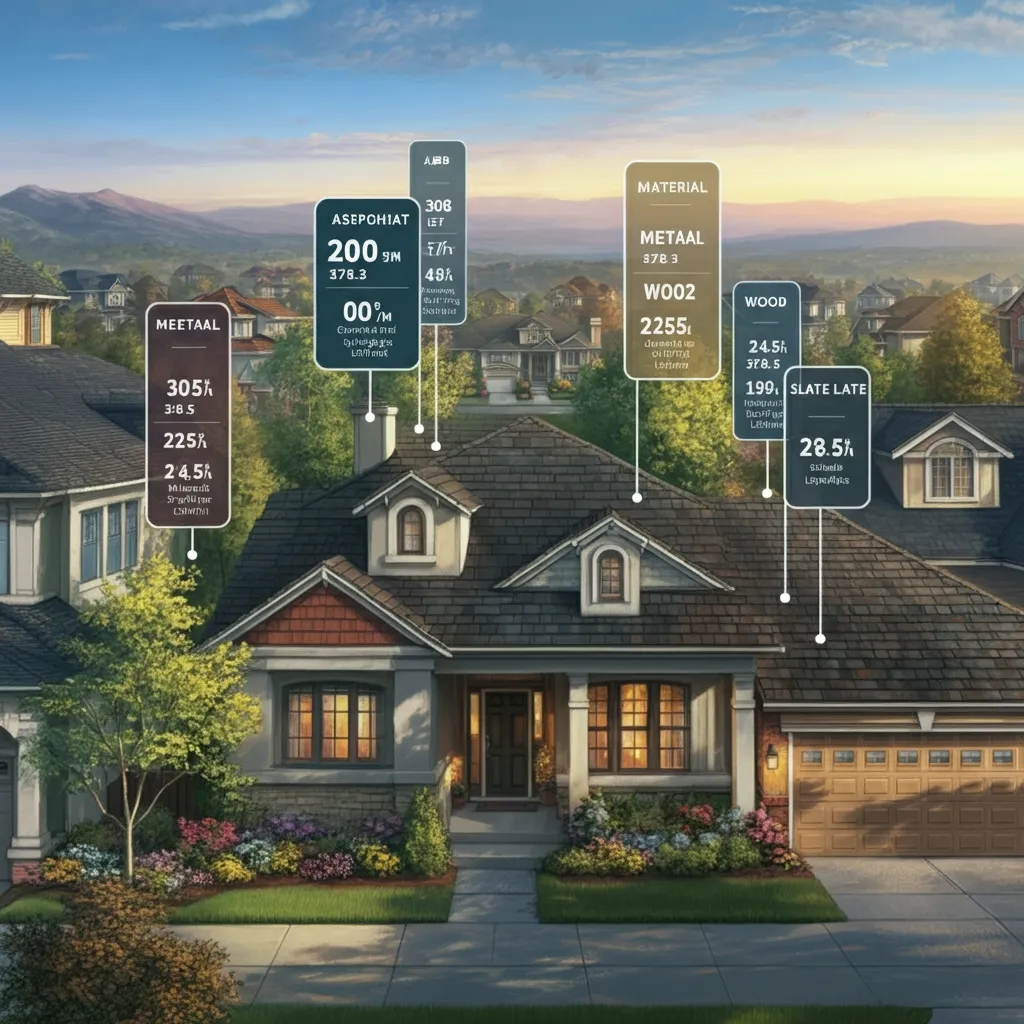
Your roof plays a crucial role in protecting your home—it shields you from the elements, improves energy efficiency, and adds to your property’s overall curb appeal. Yet, like any other part of your home, your roof won’t last forever. But how often does it need to be replaced?
This guide will help you understand the lifespan of various roofing materials, the factors that impact their longevity, and how to know when it’s time for a replacement. Whether you’re a homeowner, DIY enthusiast, or contractor, this blog will provide valuable insights to help you make informed decisions about roof maintenance and replacement.
Roofing Material Lifespans
The lifespan of your roof depends largely on the type of material used. Here’s a quick overview of common roofing materials and their typical lifespans:
1. Asphalt Shingles (20–30 years)
- Affordable and Popular: Asphalt shingles are one of the most widely used roofing materials because they’re relatively inexpensive and easy to install.
- Durability: They typically last between 20 to 30 years, but some premium variants like architectural shingles may go beyond 30 years with proper maintenance.
2. Metal Roofs (50–75 years)
- Longevity Kings: Metal roofs, made from aluminum, steel, or copper, offer exceptional durability and can last anywhere between 50 to 75 years.
- Weather-Resistant: They’re especially favored in areas prone to extreme weather due to their sturdy nature.
3. Wood Shingles and Shakes (25–30 years)
- Natural Beauty: Wood shingles and shakes are prized for their rustic appearance but require regular maintenance to prevent issues like mold, mildew, and rot.
- Lifespan Caveat: With proper care, they can last around 25 to 30 years, but humid or rainy climates may reduce their longevity.
4. Clay and Concrete Tiles (50–100 years)
- Timeless Elegance: Found in many Mediterranean-style homes, clay and concrete tiles are not only visually appealing but incredibly durable.
- Heavy Duty: These tiles can endure 50 to 100 years, though they often require reinforced structural support due to their heavy weight.
5. Slate Roofing (75–150 years)
- Luxury Option: Slate is a premium roofing material known for its stunning appearance and unrivaled longevity.
- Generational Investment: A slate roof can last between 75 to 150 years, making it an excellent long-term investment for homeowners.
Pro Tip: These figures are general guidelines; actual lifespans can vary depending on factors like climate, quality of installation, and ongoing maintenance.
Factors That Impact Roof Longevity
Several factors influence how long your roof will last. Here are key considerations to keep in mind:
1. Climate and Weather Conditions
- Harsh Sun: Prolonged exposure to UV rays can cause materials like asphalt shingles to break down faster.
- Heavy Rain or Snow: Excessive water and ice buildup can deteriorate certain materials, particularly wood shingles.
- Wind and Storms: Strong winds can loosen or tear away shingles, tiles, or panels.
2. Quality of Installation
No matter how great the material is, poor installation can significantly shorten your roof’s lifespan. Always work with licensed and experienced contractors who understand your specific roofing material.
3. Maintenance and Care
Regular inspections and maintenance are essential for catching potential issues early. Simple acts like cleaning gutters, replacing damaged shingles, or addressing mold growth can extend the life of your roof.
4. Underlayment Quality
The underlayment—the layer beneath your roofing material—plays a critical role in protecting your home. For tile roofs, for instance, the underlayment may need replacement every 20 to 30 years even if the tiles themselves are still in good condition.
Quick Tip: Schedule annual inspections with a local roofing contractor to ensure your roof remains in peak condition.
How to Know It’s Time to Replace Your Roof
While some roofs give clear indicators it’s time for a replacement, others might require a more detailed inspection. Watch out for these signs:
Visible Symptoms
- Missing or damaged shingles: Large bald spots or cracked tiles indicate your roof’s protective layer is compromised.
- Sagging: A sagging roofline suggests underlying structural issues, which can be dangerous.
- Leaks: Water stains on ceilings or walls often point to a failing roof.
Aging Roof
If your roof is approaching the end of its expected lifespan (e.g., 20 years for asphalt shingles), it’s time to proactively consider a replacement, even if there are no visible issues.
Increased Energy Bills
Higher energy costs could mean your roof is no longer insulating your home efficiently—a sign it might be time for an upgrade.
Professional Inspections
Hiring a professional to inspect your roof once or twice a year is key to catching issues early. They’ll assess areas you might not notice, like the flashing around your chimney or underlayment beneath your tiles.
Tips to Prolong Your Roof’s Life
Here are some actionable steps to help extend the life of your roof:
- Regular Inspections: Schedule an annual roof inspection to identify and address small problems before they escalate.
- Clean Gutters: Prevent water buildup by keeping gutters clear of debris.
- Trim Overhanging Branches: This reduces the risk of falling branches damaging your roof and prevents moss or algae growth caused by shade.
- Invest in Quality Repairs: Don’t cut corners. Address damage promptly with quality materials and skilled labor.
Final Thoughts and Next Steps
Your roof is a vital component of your home, so knowing when to replace it is key to maintaining its structural integrity and your peace of mind. By understanding the lifespans of roofing materials and committing to regular maintenance, you can maximize your roof’s performance and longevity.
If you suspect it’s time for a new roof, consider consulting an experienced roofing contractor who can assess its condition and provide personalized recommendations.
Still unsure about your roof’s condition? Reach out to a local professional and schedule an inspection today—they might save you from a costly surprise in the future!




